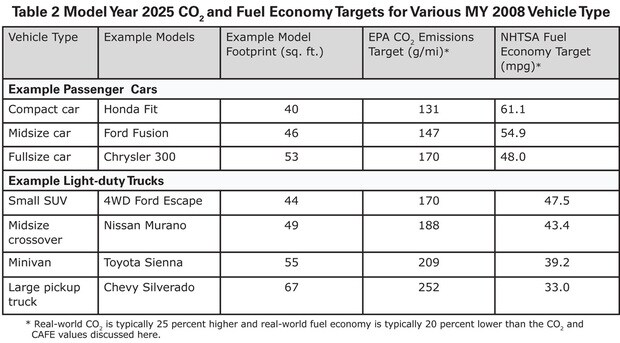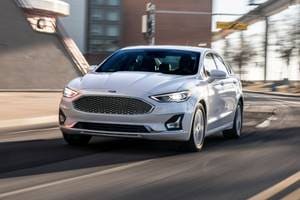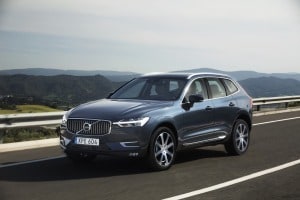Feds Present 2017-25 CAFE, Claim $300 Billion Savings

The U.S. Department of Transportation and the Environmental Protection Agency today announced a formal proposal to adopt corresponding regulations that would set Corporate Average Fuel Economy standards for the 2017-25 period that, by 2025, will have the average vehicle achieving 54.5 miles per gallon in combined city/highway fuel-efficiency. The Obama administration suggested the new standard last year and now the two agencies are presenting the rules as a final proposal to which interested stakeholders will have 60 days to comment. But in July, the administration and 13 automakers broadly agreed to this second phase of CAFE standards already enacted for the 2012-16 timeframe — now, all that seems left to do is haggle about the details.
The 893-page document would suggest the rules are far from simple. The most likely points of contention will be the cost burden the new standards would place on consumers and automakers and the potential impact on safety from vehicles that the new regulations would appear to demand become smaller and lighter. And California clear-air regulators still must come forward with a proposal from the state which is permitted to set its own clean-air regulations, although it also said it July the state would work to follow the new federal guidelines, effectively creating a single national fuel-economy standard. "We're very confident (California has) aligned with us and we'll have a national (fuel-economy) program," said EPA Assistant Administrator Gina McCarthy.
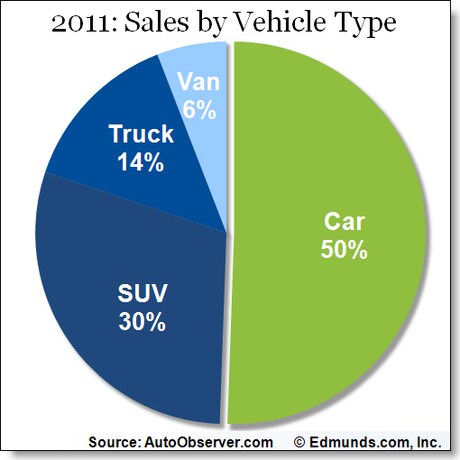
Benefits Outweigh Costs
In a conference call with the media today, Secretary of Transportation Ray Lahood and EPA Administrator Lisa Jackson were quick to point out their agencies' analysis of the cost of the program, a claimed $2,023 per vehicle in 2025. Against that initial extra cost, the agencies said, "These improvements would save consumers an average of up to $6,600 in fuel costs over the lifetime of a MY 2025 vehicle for a net lifetime savings of up to $4,400 after factoring in related increases in vehicle cost. Overall," the agencies asserted, "the net benefit to society from this rule would total more than $420 billion over the lifetime of the vehicles sold in MY 2017-2025."
Federal agencies thrive on tossing around lots of numbers, however, and a more-detailed summary of the regulations jointly issued today by the DOT and NHTSA said the $420 billion in claimed savings is at the high end of their projections. The calculated "net benefits to society" could be more than $100 billion less, depending on several factors in 2025, including the cost of money and the price of fuel during the entire period the rules encompass. The $4,000 savings to car buyers in 2025 could end up being more like $3,000. Still substantial savings, but only for those willing to initially pay more for a new vehicle. Earlier this year, the National Auto Dealers Association expressed dissatisfaction, suggesting that the new standards could artificially limit consumer choices, while the higher vehicle prices demanded by fuel-efficiency technology could dampen new-vehicle sales.
Edmunds.com CEO Jeremy Anwyl also has expressed concern that while automakers may have been strongarmed into agreeing with the new fuel-efficiency proposal, consideration for the impact on consumers has been negligible. And although the agencies said today that input from all stakeholders is welcomed during the 60-day comment period — during which there also will be "several public hearings around the country to allow further public input," the concerns of individual consumers largely have been and will be bypassed by the political juggernaut of the CAFE dialogue.
But Mark Cooper, head of research for the Consumer Federation of America, told AutoObserver that his group sees the new proposal as "a win-win-win-win" situation that will help reduce oil use, improve national security and save consumers money at the pump while putting better-engineered vehicles on the road. He decried opposition being voiced by the National Auto Dealers Assn. but said the powerful lobbying group seems to be in the minority as the Obama administration, most major automakers and most consumer and environmental goups are applauding the rules. "Almost everyone is on board with this," Cooper said. "We will have doubled the average vehicle's fuel economy between 2008 and 2025 and that's good."
The Detroit News' analysis of the huge proposed-rule document found that the agencies estimate the new fuel-economy regulations will cost the auto industry $157 billion. Detroit's automakers will be hit for bills that range from $37.8 billion for General Motors Co. to $9.7 billion for the Chrysler Group LLC. Ford Motor Co. will pay a total of $29.4 billion to get its fleet average to 54.5 mpg. Japanese automakers, with fewer large models in their lineups and a tradition for fuel-efficiency, would not be hit as hard by the proposed new CAFE rules. Toyota Motor Corp. would spend $23.2 billion, Honda Motor Co. Ltd. $15.3 billion and Nissan Motor Co. Ltd. spend $15 million.
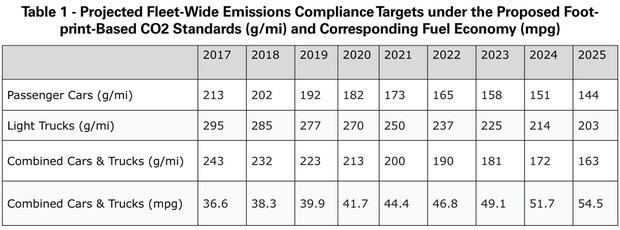
Rules — Or More Like 'Guidelines?'
All this before dissecting the rules themselves. The agencies are attempting to ensure the regulations are technology- and market-neutral, but few are likely to interpret them as entirely transparent. The standards revolve around measured emissions of carbon dioxide, the output of which is directly proportional to fuel burned. The new rules establish a framework of allowable CO2 emissions based on the vehicle's "footprint," the rectangular area described by using the wheels as the four outer points. The idea is to allow vehicles with larger footprints — i.e. the pickup trucks Americans love to drive for work and pleasure and that are a crucial component of domestic automakers' sales — to comply with less-stringent CO2 limits. But some suggest the format invites deliberately creating a larger vehicle — particularly for those with dimensions already on the borderline with the next-larger footprint "class" — in order to take advantage of the higher allowable CO2 emissions. The rules may end up leading to vehicles larger and thirstier than they might optimally be — negating the intent of the regulations.
Presumably, however, an automaker's need to have its entire fleet in compliance would mean the company would have to sell a greater number of fuel-efficient vehicles to offset any deliberately made larger. "There are no loopholes in this rule," McCarthy insisted, saying the structure compels all models to be "as fuel efficient as cost and technology allow." But there also are complex credits and bonuses for using certain technologies and the rules are front-loaded with less-severe annual gains required of large trucks in the early years of the program, a point which likely rankles automakers with no pickups in their model ranges.
In the period from 2017-21, fuel economy for trucks is required to improve annually by about 3.5 percent, McCarthy said, with larger 5-percent annual gains required in the 2022-25 period, a time when it is presumed technology will make possible larger relative efficiency gains. Moreover, pickups are singled out for a most special bonus treatment: automakers choosing to hybridize their pickups will enjoy significant per-vehicle CO2 credits for "mild" and "strong" hybrids provided the vehicles achieve a minimum sales (or is it production?) penetration.
Meanwhile, the agencies propose a system of emissions-credit banking and trading, another complexity likely to find criticism and questions. As for consumers, although they see the large fuel-economy numbers being discussed and will be led to believe the gains are "at the wheels," the complex matrix governing calculation of an individual model's fuel economy — which also now will include "off-cycle" innovations not directly related to the fuel-burning vehicle components — and the archaic formula the agencies use to determine fuel economy for CAFE purposes means that a vehicle theoretically averaging the 54.5-mpg combined fuel economy goal in reality would present a "window sticker" combined fuel economy rating of much less, perhaps in the range of 36 mpg.
